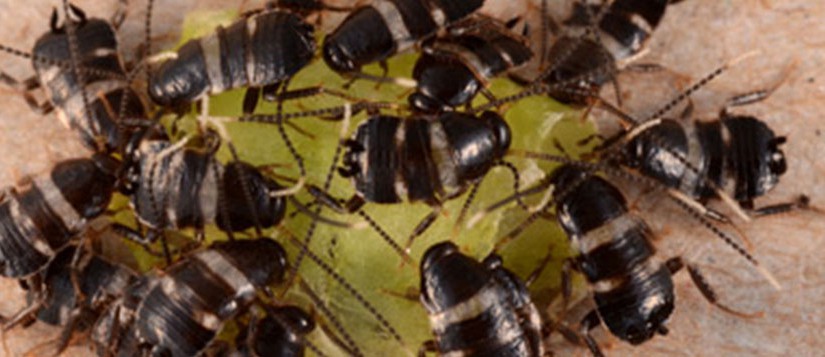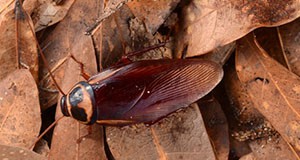Australian cockroaches are the most common outdoor cockroach in southern Florida. Though they typically stay outdoors, Australian cockroaches may also venture inside and live among humans. This 4-page fact sheet covers the Australian cockroach’s distribution and habitat, biology, medical risks to humans, and management as a pest. Written by Shiyao Jiang and Phillip E. Kaufman, and published by the UF Department of Entomology and Nematology, April 2015.
http://edis.ifas.ufl.edu/in1088
Category: House & Home
Encouraging Landscape Water-Conservation Behaviors #1: Tailoring Programs To Florida Residents Who Use Irrigation in the Home Landscape
To better promote water-conservation practices among homeowners who irrigate their landscaping, Extension professionals must first have a clear understanding of this target audience’s habits, beliefs, and needs. This 10-page fact sheet recommends that Extension professionals analyze their audiences through several factors, including their interest in water conservation and knowledge of water issues and laws. Written by Laura A. Warner, Emmett Martin, Alexa Lamm, Joy Rumble, and Randall Cantrell, and published by the UF Department of Agricultural Education and Communication, May 2015. http://edis.ifas.ufl.edu/wc199
Contaminants in the Urban Environment: Pharmaceuticals and Personal Care Products (PPCPs), Parts 1 and 2
 Pharmaceuticals and personal care products contain a variety of chemical substances that enter household wastewater from bath and shower, sinks, and washers and ultimately find their way into the environment. Continuous discharge of wastewater contributes to the accumulation of these substances in the environment — where they can be harmful to organisms. These fact sheets were written by Yun-Ya Yang and Gurpal S. Toor, and published by the UF Department of Soil and Water Science, March 2015. (Photo: iStock/Thinkstock.com)
Pharmaceuticals and personal care products contain a variety of chemical substances that enter household wastewater from bath and shower, sinks, and washers and ultimately find their way into the environment. Continuous discharge of wastewater contributes to the accumulation of these substances in the environment — where they can be harmful to organisms. These fact sheets were written by Yun-Ya Yang and Gurpal S. Toor, and published by the UF Department of Soil and Water Science, March 2015. (Photo: iStock/Thinkstock.com)
Part 1 provides an overview of the use and sale of PPCPs in the United States and the world: http://edis.ifas.ufl.edu/ss632
Part 2 discusses the sources and impacts of PPCPs and offers common-sense ways we can protect our environment from PPCPs.
http://edis.ifas.ufl.edu/ss633
Urban Pests and Pest Management
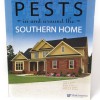 The warm southern states provide an ideal environment for a wide variety of pests — and because almost everyone has problems with pests, most urban areas are sprayed with pesticides. 30 to 40 percent of pesticide use is in urban areas, but most pesticide applications are unnecessary and can result in environmental contamination and human exposure to pesticides. This 5-page fact sheet from Pests in and around the Southern Home introduces integrated pest management practices that can help reduce pesticide use in the home. Written by P.G. Koehler, and published by the UF Department of Entomology and Nematology, October 2013.
The warm southern states provide an ideal environment for a wide variety of pests — and because almost everyone has problems with pests, most urban areas are sprayed with pesticides. 30 to 40 percent of pesticide use is in urban areas, but most pesticide applications are unnecessary and can result in environmental contamination and human exposure to pesticides. This 5-page fact sheet from Pests in and around the Southern Home introduces integrated pest management practices that can help reduce pesticide use in the home. Written by P.G. Koehler, and published by the UF Department of Entomology and Nematology, October 2013.
http://edis.ifas.ufl.edu/in1073
Homemade Household Cleaners
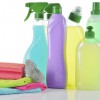 Are you on a budget? Running low on those household cleaners? Instead of heading to the store to buy those more expensive cleaners, make your own! Many homemade household cleaners can be made with just a few inexpensive products that will last a lot longer. This 3-page fact sheet was written by Amanda Griffin and Randall A. Cantrell, and published by the UF Department of Family Youth and Community Sciences, October 2014. (Photo: iStock/Thinkstock.com)
Are you on a budget? Running low on those household cleaners? Instead of heading to the store to buy those more expensive cleaners, make your own! Many homemade household cleaners can be made with just a few inexpensive products that will last a lot longer. This 3-page fact sheet was written by Amanda Griffin and Randall A. Cantrell, and published by the UF Department of Family Youth and Community Sciences, October 2014. (Photo: iStock/Thinkstock.com)
http://edis.ifas.ufl.edu/fy1449
Integrated Pest Management for Mosquito Reduction around Homes and Neighborhoods
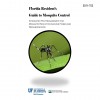 This 40-page publication describes how homeowners can use an integrated pest management (IPM) program to help decrease pesticide use, reduce the risk of contracting mosquito-borne diseases, and ease the financial burden on local governments responsible for area-wide control. Modern mosquito control emphasizes source reduction to eliminate areas where mosquitoes thrive; surveillance to determine whether pesticide applications are necessary; screening; sanitation; and other techniques described in this document. The methods recommended in this publication are particularly effective in reducing mosquitoes that transmit diseases. Homeowners who take responsibility for identifying and eliminating sources of mosquito production around their homes and neighborhoods will improve health and quality of life for all Florida residents. Written by C. R. Connelly, E. Bolles, D. Culbert, J. DeValerio, M. Donahoe, K. Gabel, R. Jordi, J. McLaughlin, A. S. Neal, S. Scalera, E. Toro, and J. Walter, and published by the UF Department of Entomology and Nematology, September 2014.
This 40-page publication describes how homeowners can use an integrated pest management (IPM) program to help decrease pesticide use, reduce the risk of contracting mosquito-borne diseases, and ease the financial burden on local governments responsible for area-wide control. Modern mosquito control emphasizes source reduction to eliminate areas where mosquitoes thrive; surveillance to determine whether pesticide applications are necessary; screening; sanitation; and other techniques described in this document. The methods recommended in this publication are particularly effective in reducing mosquitoes that transmit diseases. Homeowners who take responsibility for identifying and eliminating sources of mosquito production around their homes and neighborhoods will improve health and quality of life for all Florida residents. Written by C. R. Connelly, E. Bolles, D. Culbert, J. DeValerio, M. Donahoe, K. Gabel, R. Jordi, J. McLaughlin, A. S. Neal, S. Scalera, E. Toro, and J. Walter, and published by the UF Department of Entomology and Nematology, September 2014.
http://edis.ifas.ufl.edu/in1045
Pavement ant Tetramorium caespitum (Linnaeus) (Insecta: Hymenoptera: Formicidae)
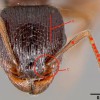 The pavement ant is one of the most commonly encountered ants in the United States. Since first introduced from Europe at the beginning of the nineteenth century, the ant has become well established and is prevalent in urban areas in the northern U.S. and parts of Canada. However, the extent of their invasiveness and severity as a pest is not well characterized. This 5-page fact sheet was written by Tyler Vitone and Andrea Lucky, and published by the UF Department of Entomology and Nematology, September 2014.
The pavement ant is one of the most commonly encountered ants in the United States. Since first introduced from Europe at the beginning of the nineteenth century, the ant has become well established and is prevalent in urban areas in the northern U.S. and parts of Canada. However, the extent of their invasiveness and severity as a pest is not well characterized. This 5-page fact sheet was written by Tyler Vitone and Andrea Lucky, and published by the UF Department of Entomology and Nematology, September 2014.
http://edis.ifas.ufl.edu/in1047
Closing Your Seasonal Home
 Get organized and make a plan before you lock your doors to leave your home for an extended period of time. Proper preparation inside and out will help ensure your return to a clean, undamaged home. Florida’s environment creates the possibility for mildew growth, storm damage, and pests. Unoccupied homes are more susceptible to these types of damage. This 6-page fact sheet provides the necessary steps to prepare your home before leaving for an extended period of time. There is also a checklist to help you remember. Written by Julie England, Audrey Norman, Randall A. Cantrell, and Maria J. Portelos-Rometo, and published by the UF Department of Family Youth and Community Sciences, June 2014.
Get organized and make a plan before you lock your doors to leave your home for an extended period of time. Proper preparation inside and out will help ensure your return to a clean, undamaged home. Florida’s environment creates the possibility for mildew growth, storm damage, and pests. Unoccupied homes are more susceptible to these types of damage. This 6-page fact sheet provides the necessary steps to prepare your home before leaving for an extended period of time. There is also a checklist to help you remember. Written by Julie England, Audrey Norman, Randall A. Cantrell, and Maria J. Portelos-Rometo, and published by the UF Department of Family Youth and Community Sciences, June 2014.
http://edis.ifas.ufl.edu/he887
Keeping it Clean: Plan Your Cleaning
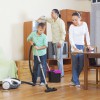 This 1-page fact sheet lists the things you should clean as you go, those tasks you should do immediately, and tasks to do less often. Written by Mary N. Harrison, Amanda Griffin, and Randall A. Cantrell, and published by the UF Department of Family Youth and Community Sciences, May 2014.
This 1-page fact sheet lists the things you should clean as you go, those tasks you should do immediately, and tasks to do less often. Written by Mary N. Harrison, Amanda Griffin, and Randall A. Cantrell, and published by the UF Department of Family Youth and Community Sciences, May 2014.
http://edis.ifas.ufl.edu/fy787
Keeping It Clean: A Healthy House
 The way you clean and maintain your home will affect the health of your family, especially children. The incidence of children diagnosed with asthma is increasing. You can help make your home safe and healthy for your children by eliminating or controlling the risks outlined in this publication. This 2-page fact sheet was written by Mary N. Harrison, Amanda Griffin, and Randall A. Cantrell, and published by the UF Department of Family Youth and Community Sciences, May 2014.
The way you clean and maintain your home will affect the health of your family, especially children. The incidence of children diagnosed with asthma is increasing. You can help make your home safe and healthy for your children by eliminating or controlling the risks outlined in this publication. This 2-page fact sheet was written by Mary N. Harrison, Amanda Griffin, and Randall A. Cantrell, and published by the UF Department of Family Youth and Community Sciences, May 2014.
http://edis.ifas.ufl.edu/fy786
Keeping it Clean: Controlling Mildew
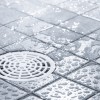 Mildew is a mold that can grow and cause damage to your health and home. The concern about mildew is that it is believed to contribute to respiratory problems, like asthma, especially in children. This 1-page fact sheet provides tips for preventing mildew and for getting rid of it. Written by Mary N. Harrison, Randall A. Cantrell, and Amanda Griffin, and published by the UF Department of Family Youth and Community Sciences, May 2014.
Mildew is a mold that can grow and cause damage to your health and home. The concern about mildew is that it is believed to contribute to respiratory problems, like asthma, especially in children. This 1-page fact sheet provides tips for preventing mildew and for getting rid of it. Written by Mary N. Harrison, Randall A. Cantrell, and Amanda Griffin, and published by the UF Department of Family Youth and Community Sciences, May 2014.
http://edis.ifas.ufl.edu/fy796
Dealing with a Florida Winter Weather Event
 People in Florida might not consider planning and preparing for winter weather events because of its normally mild temperatures. However, some northern Florida regions experience temperatures below freezing and occasional snow and ice storms during the winter months. These storm events can be dangerous and even deadly. These simple safety reminders can help you and your family be better prepared for Florida’s winter weather events. This 3-page fact sheet was written by Randall Cantrell, Judy Corbus, and Michael Spranger, and published by the UF Department of Family Youth and Community Sciences, April 2014.
People in Florida might not consider planning and preparing for winter weather events because of its normally mild temperatures. However, some northern Florida regions experience temperatures below freezing and occasional snow and ice storms during the winter months. These storm events can be dangerous and even deadly. These simple safety reminders can help you and your family be better prepared for Florida’s winter weather events. This 3-page fact sheet was written by Randall Cantrell, Judy Corbus, and Michael Spranger, and published by the UF Department of Family Youth and Community Sciences, April 2014.
http://edis.ifas.ufl.edu/fy1407
Mejorando la efectividad de un programa profesional para el manejo de plagas
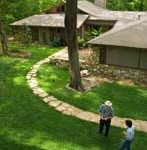 El propósito de esta guía es proporcionar información que permita optimizar el control de plagas en el entorno del hogar cuando se trabaja con un operador profesional para el control de plagas. This 2-page fact sheet is a Spanish language translation of Enhancing the Effectiveness of a Professional Pest Management Program, written by Frederick M. Fishel and Tatiana Sanchez, and published by the UF Department of Agronomy, March 2014.
El propósito de esta guía es proporcionar información que permita optimizar el control de plagas en el entorno del hogar cuando se trabaja con un operador profesional para el control de plagas. This 2-page fact sheet is a Spanish language translation of Enhancing the Effectiveness of a Professional Pest Management Program, written by Frederick M. Fishel and Tatiana Sanchez, and published by the UF Department of Agronomy, March 2014.
http://edis.ifas.ufl.edu/pi252
Como hacer una trampa interceptora de chinches de cama de articulos comunes del hogar.
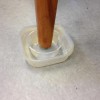 Las chinches de cama se han convertido en un problema de plagas cada vez más común en los Estados Unidos. Se han encontrado en muchos lugares diferentes en donde vive la gente, desde escuelas y restaurantes a consultorios médicos y salas de cine, pero las peores infestaciones son por lo general en lugares donde vive la gente, descansan y duermen como en casas, pisos, apartamentos, hoteles y refugios para desamparados. Las chinches de cama son más comunes en lugares como alrededor de piezas de mobiliario en donde la gente se sienta o acuesta- camas, sillas y sofás. Para descubrir si las chiches están presentes en una habitación o un mueble, el dispositivo llamado trampa interceptora de chinches puede ser útil. Las trampas interceptoras atrapan y recogen las chinches de cama cuando tratan de viajar entre sus huéspedes humanos y sus escondites. Las trampas interceptoras de chinches de cama son fácilmente hechas de artículos del hogar y recipientes de plástico desechables. This 4-page fact sheet was written by Benjamin A. Hottel, Rebecca W. Baldwin, Roberto M. Pereira, and Philip G. Koehler, and published by the UF Department of Entomology and Nematology, February 2014.
Las chinches de cama se han convertido en un problema de plagas cada vez más común en los Estados Unidos. Se han encontrado en muchos lugares diferentes en donde vive la gente, desde escuelas y restaurantes a consultorios médicos y salas de cine, pero las peores infestaciones son por lo general en lugares donde vive la gente, descansan y duermen como en casas, pisos, apartamentos, hoteles y refugios para desamparados. Las chinches de cama son más comunes en lugares como alrededor de piezas de mobiliario en donde la gente se sienta o acuesta- camas, sillas y sofás. Para descubrir si las chiches están presentes en una habitación o un mueble, el dispositivo llamado trampa interceptora de chinches puede ser útil. Las trampas interceptoras atrapan y recogen las chinches de cama cuando tratan de viajar entre sus huéspedes humanos y sus escondites. Las trampas interceptoras de chinches de cama son fácilmente hechas de artículos del hogar y recipientes de plástico desechables. This 4-page fact sheet was written by Benjamin A. Hottel, Rebecca W. Baldwin, Roberto M. Pereira, and Philip G. Koehler, and published by the UF Department of Entomology and Nematology, February 2014.
http://edis.ifas.ufl.edu/in1026
How to Make a Bed Bug Interceptor Trap out of Common Household Items
 Bed bugs have become an increasingly common pest problem throughout the United States. To discover whether bed bugs are present in a room or a piece of furniture, you can make interceptor traps out of commonly found household items and disposable plastic containers. This 5-page fact sheet was written by Benjamin A. Hottel, Rebecca W. Baldwin, Roberto M. Pereira, and Philip G. Koehler, and published by the UF Department of Entomology and Nematology, January 2014.
Bed bugs have become an increasingly common pest problem throughout the United States. To discover whether bed bugs are present in a room or a piece of furniture, you can make interceptor traps out of commonly found household items and disposable plastic containers. This 5-page fact sheet was written by Benjamin A. Hottel, Rebecca W. Baldwin, Roberto M. Pereira, and Philip G. Koehler, and published by the UF Department of Entomology and Nematology, January 2014.
http://edis.ifas.ufl.edu/in1022
Drying and Preserving Plant Materials for Decorative Uses
 Dried and preserved plant materials are popular for home decor. Dried arrangements can preserve the graceful lines, textures, and colors of flowers and foliage with a subtle and gently aged appearance. This 14-page fact sheet was written by Sydney Park Brown, Patricia White, Benny Tjia, Marion R. Sheehan, and published by the UF Department of Environmental Horticulture, November 2013.
Dried and preserved plant materials are popular for home decor. Dried arrangements can preserve the graceful lines, textures, and colors of flowers and foliage with a subtle and gently aged appearance. This 14-page fact sheet was written by Sydney Park Brown, Patricia White, Benny Tjia, Marion R. Sheehan, and published by the UF Department of Environmental Horticulture, November 2013.
http://edis.ifas.ufl.edu/ep004
How to Hire and Manage Residential Contractors
 If you are looking for a contractor for either home building or remodeling, ask difficult questions before you enter into a contract. This way you and the contractor have a clear understanding of the other’s expectations. Before signing a contract and beginning a project is the best time to thank contractors for their consideration and time, rather than risk entering into an unfortunate working relationship that could require legal intervention. Contractors understand potential clients, and they will inform you if they do not want to accept a contract with you. This negotiation period should not be taken personally by either party and should only develop into a business relationship that exists during the period of hire and warranty outlined in the contract. This 5-page fact sheet was written by Randall A. Cantrell, and published by the UF Department of Family Youth and Community Sciences, September 2013.
If you are looking for a contractor for either home building or remodeling, ask difficult questions before you enter into a contract. This way you and the contractor have a clear understanding of the other’s expectations. Before signing a contract and beginning a project is the best time to thank contractors for their consideration and time, rather than risk entering into an unfortunate working relationship that could require legal intervention. Contractors understand potential clients, and they will inform you if they do not want to accept a contract with you. This negotiation period should not be taken personally by either party and should only develop into a business relationship that exists during the period of hire and warranty outlined in the contract. This 5-page fact sheet was written by Randall A. Cantrell, and published by the UF Department of Family Youth and Community Sciences, September 2013.
http://edis.ifas.ufl.edu/fy1380
How To Buy Pest Control Services
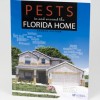 Pest control, like any kind of business, is a joint venture between the company and the customer. As with many businesses, customers may have difficulty judging whether they have received the most skilled efforts for their money. This 4-page fact sheet should help customers objectively look at the service they are buying to determine its merit. Written by P. G. Koehler, and published by the UF Department of Entomology and Nematology, July 2013. This fact sheet updates a chapter of SP134: Pests in and around the Florida Home, which is available from the IFAS Extension Bookstore.
Pest control, like any kind of business, is a joint venture between the company and the customer. As with many businesses, customers may have difficulty judging whether they have received the most skilled efforts for their money. This 4-page fact sheet should help customers objectively look at the service they are buying to determine its merit. Written by P. G. Koehler, and published by the UF Department of Entomology and Nematology, July 2013. This fact sheet updates a chapter of SP134: Pests in and around the Florida Home, which is available from the IFAS Extension Bookstore.
http://edis.ifas.ufl.edu/mg237
Florida Foliage House Plant Care: ZZ Plant
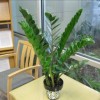 ZZ plant is enjoyed for its unique appearance, its ability to grow under low light conditions, and its tolerance to drought. ZZ’s naturally glossy leaves are so shiny that the plant appears to have been polished. This 2-page fact sheet was written by R. J. Henny and J. Chen, and published by the UF Department of Environmental Horticulture, July 2013.
ZZ plant is enjoyed for its unique appearance, its ability to grow under low light conditions, and its tolerance to drought. ZZ’s naturally glossy leaves are so shiny that the plant appears to have been polished. This 2-page fact sheet was written by R. J. Henny and J. Chen, and published by the UF Department of Environmental Horticulture, July 2013.
http://edis.ifas.ufl.edu/ep480
Florida Foliage House Plant Care: Spathiphyllum
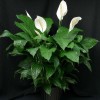 Most Spathiphyllum are seen in flower when at market. The attractive white blooms, called spathes, are long lasting. With proper plant care, Spathiphyllum may produce blooms year after year. Spathiphyllum is a very attractive house plant even when not in bloom and adapts well to home and patio environments. This 2-page fact sheet was written by R. J. Henny and J. Chen, and published by the UF Department of Environmental Horticulture, June 2013.
Most Spathiphyllum are seen in flower when at market. The attractive white blooms, called spathes, are long lasting. With proper plant care, Spathiphyllum may produce blooms year after year. Spathiphyllum is a very attractive house plant even when not in bloom and adapts well to home and patio environments. This 2-page fact sheet was written by R. J. Henny and J. Chen, and published by the UF Department of Environmental Horticulture, June 2013.
http://edis.ifas.ufl.edu/ep477
